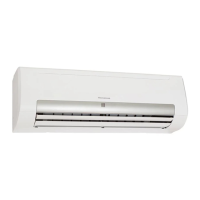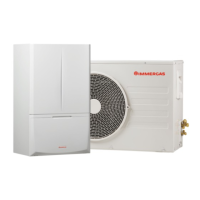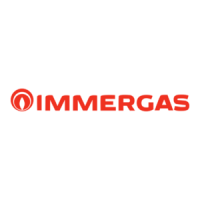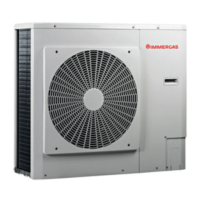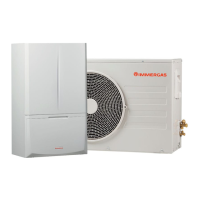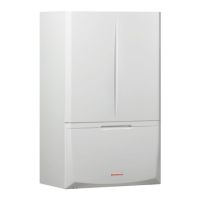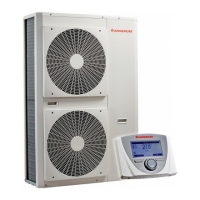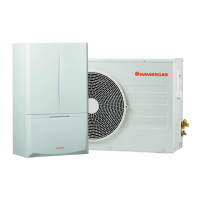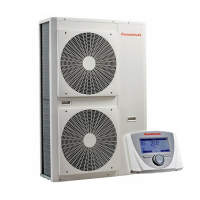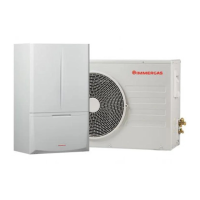21
6 - WATER CONNECTIONS
6
WATER
CONNECTIONS
6.1 WATER FEATURES
Fill the storage tank (DHW) only during the unit start-up.
If the house is not immediately lived,or the unit is turned
o for long periods, empty the storage tank to avoid the
stagnation of the water, or with temperatures close to 0°C
the risk of freeze. See Maintenance section for drain.
Water features
• Complying with the local regulations
• Water hardness (CaCo3) between 10°f and 15°f
• Langelier (I
L
) index between 0 and +0.4
• Within the limits indicated by table
e water quality must be checked by qualied personnel.
Hardness
If water hardness is high install a system suitable to
preserve the unit from harmful deposits and limestone
formations.
Cleaning
Before making the water connections to unit clean
carefully the system with specic and eective products
for removing residues or impurities that could aect the
operation.
e existing systems must be free from sludgs, contami-
nants and protected against foulings.
Exclusions
e warranty does not cover damages caused by limestone
formations, deposits and impurities from the water supply
and/or failure from failed system clearing to clean system.
If necessary, t a water soener to reduce water hardness.
New systems
In case of new installations, it is essential to wash the entire installation
(with the circulator uninstalled) before commissioning the central
installation. is removes residues of the installation process (welding,
waste, joint products...).
e system must then be lled with clean high-quality tap water.
Existing systems
If a new unit is installed on an existing system, the system must be
rinsed to avoid the presence of particles, sludge and waste.
e system must be drained before installing the new unit.
Dirt can be removed only with a suitable water ow.
Each section must then be washed separately.
Particular attention must also be paid to “blind spots” where a lot of
dirt can accumulate due to the reduced water ow.
e system must then be lled with clean high-quality tap water.
If, aer rinsing, the quality of the water is still unsuitable, a few measures
must be taken to avoid problems.
An option to remove pollutants is to install a lter.
Water component for corrosion limit on Copper
PH 7,5 ÷ 9,0
SO
4
--
< 100 ppm
HCO
3
-
/SO
4
--
> 1
Total Hardness 8 ÷ 15 °f
Cl- < 50 ppm
PO
4
3-
< 2,0 ppm
NH3 < 0,5 ppm
Free Chlorine < 0,5 ppm
Fe
3
+
< 0,5 ppm
Mn
++
< 0,05 ppm
CO
2
< 50 ppm
H
2
S < 50 ppb
Temperature < 65 °C
Oxygen content < 0,1 ppm
Sand
10 mg/L
0.1 to 0.7 mm max diameter
Ferrite hydroxide Fe3O4 (black)
Dose < 7.5 mg/L 50% of mass with diameter < 10 µm
Iron oxide Fe2O3 (red) Dose < 7.5mg/L Diameter < 1 µm
6.2 PIPES CONNECTIONS
Connect the water outlet/inlet using pipes and couplings
that are resistant to both the operating pressure and the hot
water temperature, which can reach 70°C.
Do not use materials that cannot withstand high tempera-
tures. Do not use exible pipes for unit connection.
6.3 DIELECTRIC JOINTS PROVIDED BY
THE CUSTOMER
In order to prevent the formation of galvanic couples between iron/
copper (risk of corrosion), do not connect the domestic hot water
connection directly to the copper pipes.
Install a dielectric joint on the domestic hot water inlet and outlet pipes.
e above devices must be installed downstream of the pro-
duct, before hydraulic shut-os, and said devices must not
be hydraulically shut-o either.
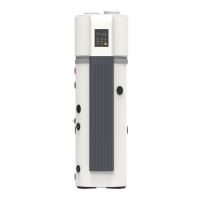
